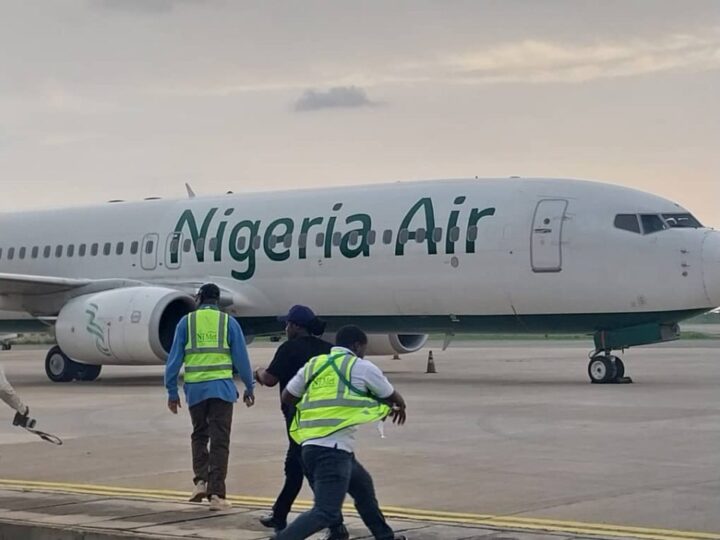Airline operators in Nigeria are raising serious concerns over what industry insiders describe as up to $1.3 billion in lost benefits tied to the country’s underperformance in the Single African Air Transport Market (SAATM) initiative. While SAATM promises liberalized skies and increased intra-African traffic, stakeholders argue that Nigeria’s failure to fully engage has left both the aviation sector and broader economy on the sidelines.
SAATM, launched by the African Union in 2018, seeks to remove barriers across the continent—such as restrictive bilateral air service agreements—and enable airlines to fly freely between member states. In theory, countries like Nigeria should benefit from expanded route networks, increased passenger volumes, and cross-border partnerships. However, local operators say regulatory inertia, infrastructure gaps, and protectionist policies have prevented the nation from seizing available growth.

Industry executives estimate that if Nigeria had embraced full liberalization alongside peer countries, the country could capture up to $1.3 billion in additional annual aviation revenues through higher international connectivity, expanded cargo flows, and boosted tourism. These gains would encompass new inbound routes, healthier market competition, and more efficient resource utilization—from underutilized airports to ancillary aviation services. Instead, airlines warn they remain trapped in limited bilateral routes and costly licensing procedures.
Senior executives at Nigeria’s major carriers note that regulatory delays in approving new routes under SAATM—combined with restrictive cabotage policies and opaque slot allocations—have discouraged airline expansion plans. Infrastructure challenges, including airport capacity constraints and outdated ground handling services, further tighten the space for growth, making investor appetite fragile.
Domestic operators also argue that political resistance to open skies from state governments and legacy bilateral agreements has deterred market entry. According to them, protections granted to national carriers in some agreements inhibit competition and keep fares high, restricting the flow of passengers and goods especially on continental routes where more liberal regimes thrive.
Cargo stakeholders underscore the opportunity cost in lost intra-African trade. The continent has long been underserved in cargo logistics, but SAATM’s design offers Nigeria potential advantages in exporting agricultural produce, pharmaceuticals, and light manufactured goods to nearby markets under preferential terms. In practice, freight traffic remains minimal due to limited carrier reach and infrastructure logistics challenges. As a result, Nigeria loses market share to hubs in Ethiopia, Kenya, and South Africa operating more vibrant intra-African connectivity.
Tourism operators echo the frustration. Nigeria has some of Africa’s largest entertainment, cultural, and business hubs. Yet direct air links to other African nations remain sparse; travelers often transit through third-party countries to reach destinations like Kenya, South Africa, or Ghana. Travel agents warn that such indirect routes dilute Nigeria’s competitiveness and scare away regional tourists, reducing expected tourism revenue and foreign exchange inflows.
Small airlines and regional operators express disappointment at the failure to enjoy the low-cost carrier boom seen in other liberalized markets. In countries where SAATM is active, LCCs (Low-Cost Carriers) have driven up passenger volumes through affordable fares and high frequency city-to-city services. In contrast, Nigeria’s airspace remains tightly regulated and conservative, discouraging agile, cost-focused entrants from scaling operations.
Officials from civil aviation authorities have acknowledged the delay in SAATM rollout but maintain that caution is warranted to protect national aviation interests. They point to ongoing reforms around safety oversight, carrier financial soundness, and bilateral agreement renegotiations. While officials affirm Nigeria is committed to eventual SAATM participation, they also stress that preparation must align with infrastructural readiness and fiscal stability.
Aviation analysts say the stakes are high. The International Air Transport Association (IATA) projects that unlocking air market liberalization could help Nigeria restore leadership in West African aviation. A potential $1.3 billion upside would translate into job creation—not just in airlines but across airport services, logistics, hospitality, and downstream travel industries. Additionally, improved connectivity would support export diversification, facilitate regional investment flows, and stimulate SME cross-border growth.
Some voices inside regulatory circles believe Nigeria may regain ground by fast-tracking policy reforms—such as removing route restrictions, issuing route licenses to qualified private airlines, and upgrading airport infrastructure to international standards. Analysts recommend aligning Nigeria’s action plan with SAATM’s model laws while accelerating domestic airline recapitalization and facilitating partnerships with regional players.
At the passenger level, experts argue liberalization would significantly lower fares. In many African countries where SAATM is taking shape, increased competition has led to fare reductions of up to 30%. Affordable ticket pricing, frequency, and simplified route structures could dramatically boost intra-regional travel—from corporate travelers to cultural exchange and diaspora movement.
In addition to airlines and regulators, civil society and business forums urge government action. The Nigerian Aviation Handling Company (NAHCO), travel agents associations, hotel operators, and exporters jointly advocate for structural reforms that would position Nigeria as a pivotal aviation hub in Africa. They call for SAATM-related policy acceleration, coordinated federal agency implementation, and public-private sector collaboration to convert promise into opportunity.
Still, skepticism remains within the aviation sector. Carriers worry that liberalization without safety nets could expose national airlines to predatory pricing by larger competitors. Smaller regional operators may find the initial adjustment difficult without protective transitional support. Hence, many call for government to design phased liberalization with clear guardrails—balancing open access with capacity readiness.
Looking ahead, stakeholders expect Nigeria to unveil its SAATM adoption roadmap within the next quarter, tying it to targets around route expansion, safety upgrades, and export facilitation. Airlines have asked for a clear timeline and stakeholder engagement schedule before committing capital for fleet upgrade or new DFS markets.
In summary, operators argue that Nigeria is foregoing up to $1.3 billion in annual benefits by hesitating to fully engage with the SAATM framework. Generating stronger intra-African cohesion, increased traffic, and improved economic integration hinges on timely policy action and infrastructure readiness. Without decisive reform, they warn, Nigeria risks stagnation in aviation growth while regional competitors surge ahead.
Support InfoStride News' Credible Journalism: Only credible journalism can guarantee a fair, accountable and transparent society, including democracy and government. It involves a lot of efforts and money. We need your support. Click here to Donate
